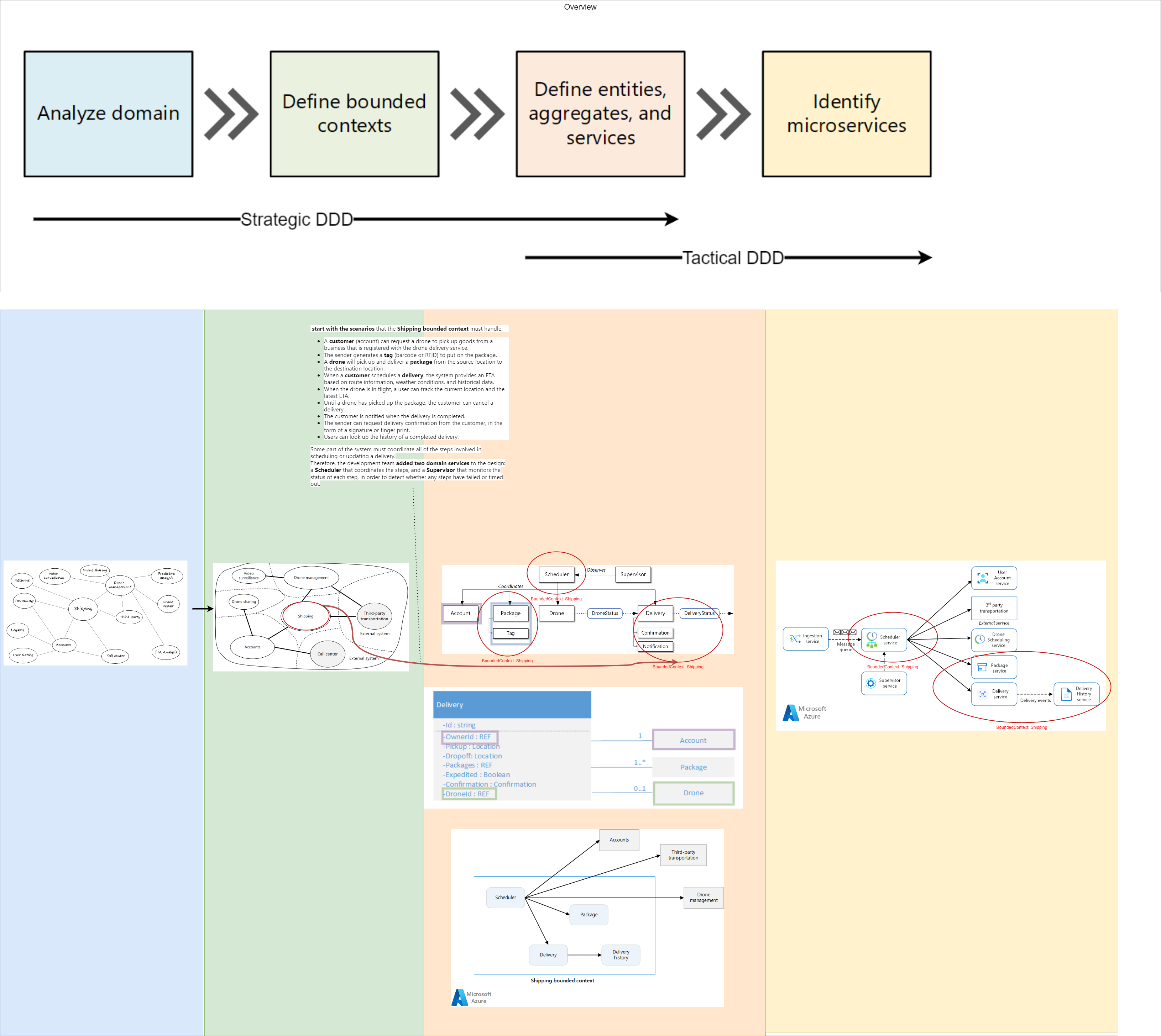Table of Contents
Domain Driven Design
A good overview: http://www.methodsandtools.com/archive/archive.php?id=97
Glossary
| Bounded Context | defines the specific boundaries within which a particular model or language is valid. |
| Ubiquitous language | shared, consistent language used by all team members involved in a project, ensuring clear communication and alignment between domain experts and developers. |
| Value objects | Stores some logic from the domain. Like validation of @ in a ValueObject “Email” |
| Entity | Will be persisted as row in a database table. Its like the JPA Entity. |
| Modules (packages or namespaces) | Way to implement conceptual contours. Helps to separate areas of domain. |
| Aggregate Root | https://martinfowler.com/bliki/DDD_Aggregate.html. a cluster of domain objects that can be treated as a single unit. An example may be an order and its line-items. PlayList. Clinic Visits. |
| A repository | is an abstraction over the persistence store |
| services | In Services we implement cross cutting functionality. |
| Domain services | Implement communication between different entities, which is not directly associated with one concrete entity. E.g. Transaction from one account to another. Domain service can both call or be called by a domain entity |
| Application services | Application services use domain services, but not vice versa. Application layer service handle cross cutting concerns: security, packaging requests, receiving requests. |
Layered Systems
DDD is mainly about the Domain Layer. THe whole logic should be implemented in this layer. But DDD expects the other layers to exist.
| Presentaion Layer | UI. The presentation layer generally deals with serializable representations of a domain object |
| Application Layer | Holds the security logic, request packaging, unpackaging. |
| Domain Layer | The Domain logic. |
| Infrastructure Layer | The persistence logic. |
DDD & Microservices
Overview
DDD has two distinct phases.
- Strategic
- Tactical
The participate in the design of micro-services as following:
- Start by analyzing the business domain to understand the application's functional requirements. The output of this step is an informal description of the domain, which can be refined into a more formal set of domain models.
- Next, define the bounded contexts of the domain. Each bounded context contains a domain model that represents a particular subdomain of the larger application.
- Within a bounded context, apply tactical DDD patterns to define entities, value objects, aggregates, and domain services.
- Use the results from the previous step to identify the microservices in your application.
Strategic Design
In strategic DDD, you are defining the large-scale structure of the system.
Tactical Design
Tactical DDD provides a set of design patterns that you can use to create the domain model.
| Entities | are objects with own identifier. |
| Value Objects | are identified by their values. Like Address might be one. And re-created rather than copied. |
| Aggregate |
The purpose of an aggregate is to model transactional invariants. Things in the real world have complex webs of relationships. Example: Customers create orders, orders contain products, products have suppliers, and so on. If the application modifies several related objects, how does it guarantee consistency? How do we keep track of invariants and enforce them? |
| Services | In DDD terminology, a service is an object that implements some logic without holding any state. Evans distinguishes between domain services, which encapsulate domain logic, and application services, which provide technical functionality, such as user authentication or sending an SMS message. Domain services are often used to model behavior that spans multiple entities. |
Overview of the process





